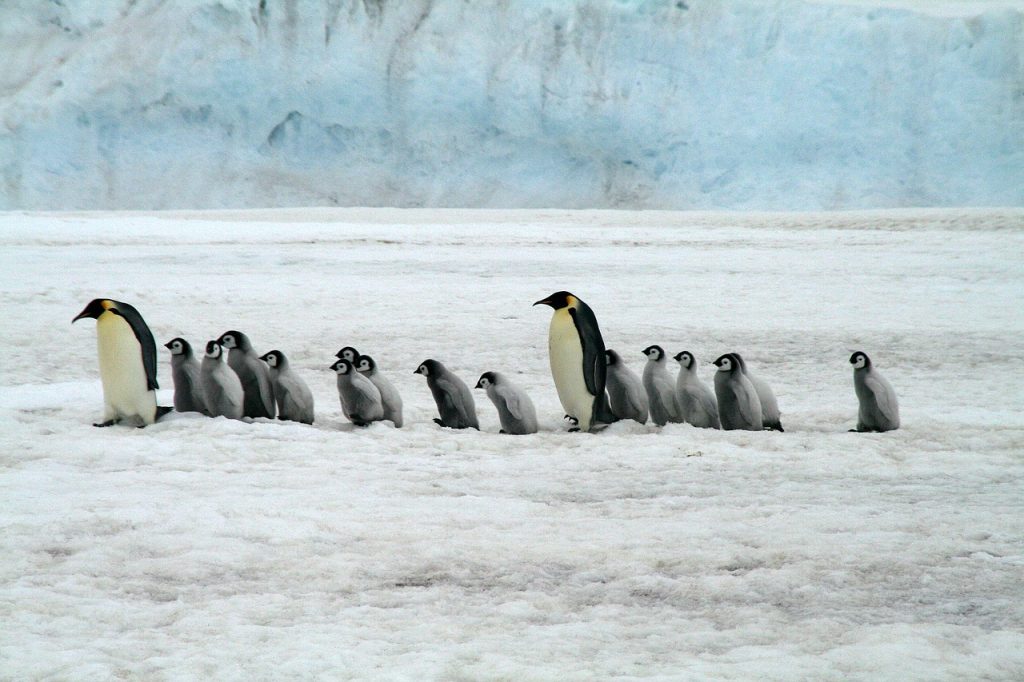
Are Penguins Birds?
For those of you trying to resolve a quick argument over whether or not penguins are birds, we’ll get straight to the point: Yes, penguins are birds. In zoological terms, they are classified as aves.
More specifically they are black and white, flightless seabirds found in the Southern Hemisphere. They belong to the Spheniscidae family, mostly located in Antarctica. Learning about them, it’s easy to see why they’ve captured the hearts of scientists and pop culture alike. However, due to their popularity, penguins are often misunderstood. Read on to learn some facts about these delightful creatures:
Appearance of a Penguin
A penguin’s distinct black and white coloring is often compared to a tuxedo. This coloring is actually a type of camouflage known as “countershading.” Penguins do have wings, even though they are flightless. These wings have adapted over time to work like flippers and aid with swimming.

Penguins’ Habitat
Penguins are found on every continent in the Southern Hemisphere. They range from the Galapagos Islands all the way to Antarctica.
These birds spend up to 75% of their lives in the water. In fact, certain species of penguins only leave the water to molt and mate. Larger penguin species, such as the emperor penguin, are found in colder places. Larger body masses are better adapted to extreme, cold weather. The warmer the habitat, the smaller the species of penguin.

Penguins’ Diet
The main staples of their diet are krill, fish, and squid. Penguins do all of their hunting in the water. They will catch fish in their beaks and will swallow as they swim in shallow pools. Penguins find their food in the top 20 meters of water, which means they really have no need to do any deep sea swimming.
Larger populations really take a chunk out of certain areas. For example, the adélie penguin community can consume up to 1.5 million metric tons of krill in a single year.
Mating Habits
Penguins are social birds and a group of them is called a colony. Many species conduct their lives’ activities in groups, whether that’s hunting, mating, or nesting. During a breeding season, some species form large groups called “rookeries.” These groupings can include thousands of birds.
Penguins are also a monogamous bird, choosing one mate for the season and often mating with that partner for the duration of their lives. The male usually starts the mating ritual by finding a desirable nesting site. They all have a distinct call and they use this call as a way to locate their mate and their chicks in such large groups.
Most species breed in the spring and summer months of the southern hemisphere. The incubation period of the egg (or eggs) is between one month and 66 days.
Emperor penguins mate in the coldest location of any bird – with temperatures in Antarctica reaching -40 degrees Fahrenheit and wind speeds of 89 miles per hour.

Global Warming’s Impact on Penguins
Penguins need cold water to survive and are particularly vulnerable to climate change. As the surface temperature of the ocean increases, small animals like krill and crustaceans will decrease in numbers in the waters where penguins hunt. Hungry penguins are more susceptible to disease and death. This is not a new phenomenon. Back in the 1980s, more than three-quarters of the Galapagos population died due to warming waters of an El Niño year. As is always the case, climate change predictions are bleak for penguins and for humans alike.
Will these incredible birds survive the Anthropocene? And what does it say about humankind if we don’t do everything in our power to reverse this course?












